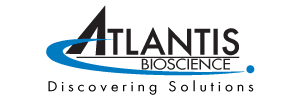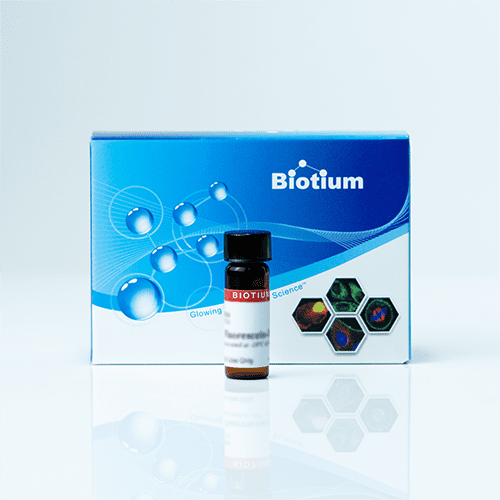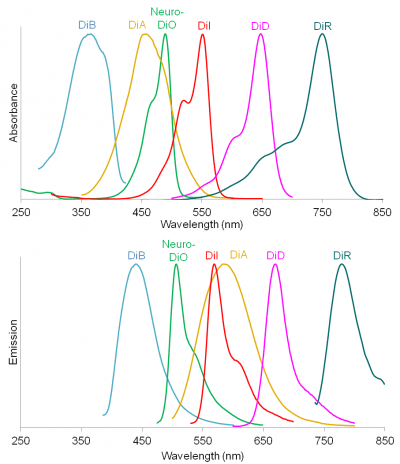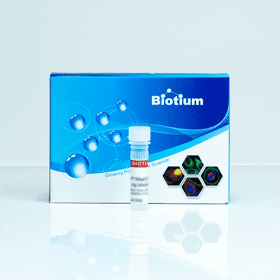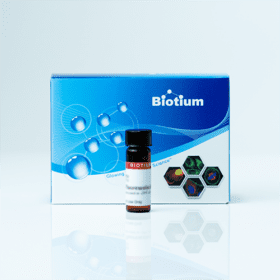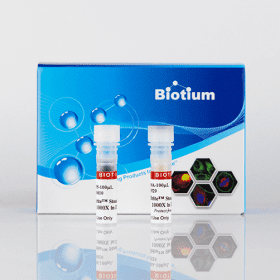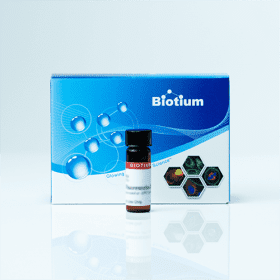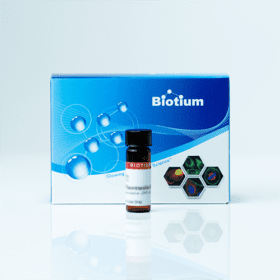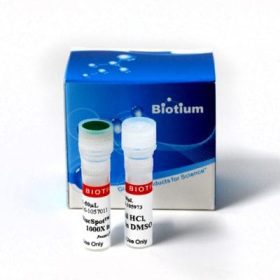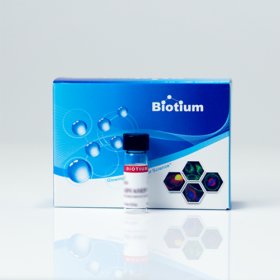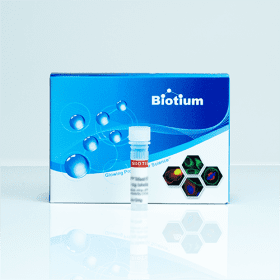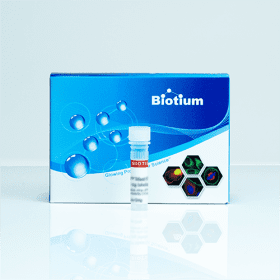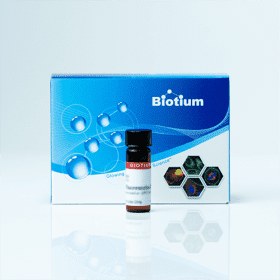Biotium products are distributed only in Singapore and Thailand.
Brighten Your Research: DiD Membrane Stain for High-Resolution Imaging
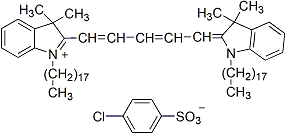
Visualize cell membranes with exceptional clarity using Biotium’s DiD Membrane Stain. This lipophilic carbocyanine dye (similar to Dil), offers superior performance compared to traditional options, making it ideal for a wide range of applications in cell biology and neuroscience research. It has longer absorption and emission wavelengths.
Key Features of DiD Membrane Stain:
Sharp Fluorescence: Ex/Em maxima at 644/663 nm ensures bright and well-defined labeling for accurate image analysis.
Excellent Photostability: Minimize signal fading during extended imaging experiments.
Superior Membrane Specificity: Specifically targets cell membranes, minimizing background noise for cleaner data.
Multicolor Compatibility: Combine DiD with other fluorescent probes like DiR, DiI, and Neuro-DiO for multicolor imaging and colocalization studies.
Convenient Formats: Choose from the versatile DiD powder or the ready-to-use CellBrite™ Red solution for simplified workflow integration.
DiD Membrane Stain Applications:
- Live cell imaging
- Fixed cell imaging
- Cell lineage tracing
- Neurite outgrowth studies
- Multicolor colocalization experiments
| 5 x 1 mg | #60014-5mg |
|---|---|
| 10 mg | #60014-10mg |
Technical Specifications
CAS number: 127274-91-3
Probe cellular localization: Membrane/cell surface, Membrane/vesicular
For live or fixed cells: For fixed cells, For live/intact cells
Assay type/options: Co-cultures, Extended staining (several days to weeks)
Fixation options: Permeabilize before staining, Fix after staining (formaldehyde), Fix before staining (formaldehyde)
Colors: Far-red
Excitation/Emission: 644/663 nm
λEx/λEm (MeOH): 644/663 nm
Extinction Coefficient (ε): 193,000
Appearance: Dark blue solid
Solubility: Ethanol, DMF, DMSO
Storage: 4°C, protected from light
FAQs
Q1: My product was accidentally left out at room temperature or exposed to light. Is it ruined?
A1: Most of our products are stable at room temperature for many days, so in all likelihood the product will still work just fine. To be on the safe side, we recommend performing a small scale positive control experiment to confirm that the product still works for your application before processing a large number of samples or precious samples.
Q2: Where can I find the expiration date or shelf life of a product? Is the product still good if I have had the product longer than the guaranteed shelf life?
A2: Biotium guarantees the stability of chemicals, dyes, and gel stains for at least a year from the date you receive the product. However, the majority of these products are highly stable for many years, as long as they are stored as recommended. Storage conditions can be found on the product information sheet or product safety and data sheet, material safety data sheet, and on the product label. Fluorescent compounds should be protected from light for long term storage.
If you have a Biotium compound that has been in storage for longer than one year that you wish to use, we recommend performing a small scale positive control experiment to confirm that the compound still works for your application before processing a large number of samples or precious samples.
Q3: My product arrived at room temperature or thawed, but it’s supposed to be stored at 4°C or -20°C. Is it still ok?
A3: Most of our products are stable at room temperature for many days, but we recommend storage at 4°C or -20°C to prolong shelf life. In the case of many of our aqueous dye solutions, the compounds are very stable at room temperature, but we recommend cold storage to prevent the growth of mold or other microbes over time. Therefore, to save on shipping costs, products with recommended storage at 4°C or -20°C may ship at ambient temperature or with an ice pack. These products may thaw without affecting product performance. When you receive the product, place it under the recommended storage conditions.
Some products are shipped with blue ice packs as an extra precaution against high temperatures. The blue ice packs may be thawed upon arrival without affecting product performance.
Products with recommended storage at ultra low temperature (-70°C) that also ship on dry ice should arrive frozen. If a product you received was shipped on dry ice and thawed during transit, please contact customer service at [email protected]
Reference Publications
Konno, Alu et al.
Pathological application of carbocyanine dye-based multicolour imaging of vasculature and associated structures
Scientific reports vol. 10,1 12613. 28 Jul. 2020
DOI: 10.1038/s41598-020-69394-0
Article Snippet: “The following reagents were used: DiD(C18) (Biotium, Fremont, CA, USA; #60014);”
Eisemann, Tanja et al.
An advanced glioma cell invasion assay based on organotypic brain slice cultures
BMC cancer vol. 18,1 103. 30 Jan. 2018
DOI: 10.1186/s12885-018-4007-4
Article Snippet: “1 × 106 cells/ml PBS were incubated with 5 μl lipophilic dye DiD (1 mg/ml in DMSO, Biotium #60014) or 5 μl DiI (Biotium # 30022) for 30 min at 37 °C.”
Tabak S, Schreiber-Avissar S, Beit-Yannai E
Influence of Anti-Glaucoma Drugs on Uptake of Extracellular Vesicles by Trabecular Meshwork Cells
Int J Nanomedicine. 2021;16:1067-1081
DOI: https://doi.org/10.2147/IJN.S283164
Article Snippet: “Purified NPCE EVs were labeled with 2mM of DiD; a lipophilic fluorescent dye (1,10-dioctadecyl- 3,3,30,30-tetramethyl-indodi-carbocyanine,4-chloro-benzenesulfonate salt Biotium, Hayward, CA, USA)”
